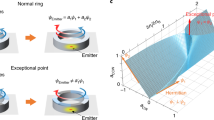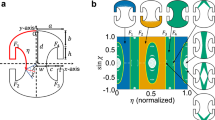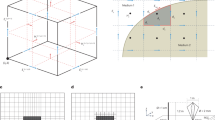Abstract
A VITAL step in the proof of Wien‘s Law, E(λT) = T5ψ(λT), for complete radiation, is the adiabatic change in volume of a cavity filled with radiation. In Wien‘s first proof (1893)1 and in the more analytical version of it given by O. W. Richardson2, the cavity is cylindrical in shape and is provided with a movable piston. In order that the distribution in direction may remain random during the expansion, Wien stipulated that the cavity walls should be "perfectly white" (that is, diffuse rather than specular reflectors).
This is a preview of subscription content, access via your institution
Access options
Subscribe to this journal
Receive 51 print issues and online access
$199.00 per year
only $3.90 per issue
Buy this article
- Purchase on Springer Link
- Instant access to full article PDF
Prices may be subject to local taxes which are calculated during checkout
Similar content being viewed by others
References
Sitz. Kön. preuss. Akad. Wiss., 55 (1893).
"The Electron Theory of Matter", 339–342 (Camb. Univ. Press, 1916).
B. A. Report, Bradford, 657 (1900); "Collected Papers", 2, 217.
Verh. deut. phys. Ges., 16, 93 (1914).
Wied.Ann., 52, 132 (1894).
"Wärmestrahlung", 68 (1906). The argument of pp. 69–70 fails for a perfectly reflecting cylindrical cavity.
Author information
Authors and Affiliations
Rights and permissions
About this article
Cite this article
HERCUS, E. The Proof of Wien‘s Law. Nature 162, 143–144 (1948). https://doi.org/10.1038/162143c0
Issue Date:
DOI: https://doi.org/10.1038/162143c0
Comments
By submitting a comment you agree to abide by our Terms and Community Guidelines. If you find something abusive or that does not comply with our terms or guidelines please flag it as inappropriate.



